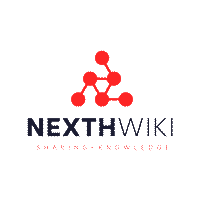Ai Text-to-Business
AI Text-to-Business' is a transformative application of artificial intelligence that translates natural language inputs into complex, enterprise-level business operations. This technology integrates with business systems to automate and optimize a wide range of business activities, from decision-making to strategic planning and supply chain management. Unlike simpler automation tools, AI Text-to-Business harnesses the power of machine learning and natural language processing (NLP) to understand and act upon nuanced business requirements, effectively turning text into sophisticated business actions.
Core Capabilities
- Natural Language Processing (NLP): AI Text-to-Business uses advanced NLP techniques to accurately interpret and understand the intent behind complex business queries, commands, or instructions written in natural language.
- Business Process Automation: Automates intricate business processes, such as financial transactions, HR operations, and procurement activities, based on textual input.
- Predictive Analytics and Insights: Analyzes large volumes of data to generate predictive insights, which help businesses in forecasting trends, optimizing operations, and making informed decisions.
- Dynamic Workflow Management: Adjusts and manages business workflows dynamically in response to textual directives, allowing for real-time adaptation to changing business conditions.
- Scalability: Capable of scaling across various departments and functions, AI Text-to-Business can handle a wide range of tasks, from customer relationship management (CRM) to enterprise resource planning (ERP).
Applications and Use Cases
- Finance and Accounting: Automates tasks like financial forecasting, audit management, and compliance reporting, ensuring accuracy and efficiency.
- Supply Chain and Logistics: Enhances supply chain visibility and coordination by automating responses to changes in inventory, demand, and logistics.
- Sales and Marketing: Generates targeted marketing strategies and automates customer engagement processes, optimizing conversion rates and customer satisfaction.
- Human Resources: Manages recruitment, employee onboarding, and performance reviews, streamlining HR processes and improving employee experience.
- Customer Support: Provides sophisticated customer support by automating responses to complex queries and integrating with CRM systems to deliver personalized service.
Difference Between AI Text-to-Business and AI Text-to-Action
While both AI Text-to-Business and AI Text-to-Action involve converting textual inputs into automated tasks, they differ significantly in scope, complexity, and application:
AI Text-to-Action
Scope: Focuses on executing simple, individual tasks based on specific commands.
Complexity: Handles straightforward actions like setting reminders, sending emails, or initiating a pre-defined workflow.
Application: Typically used in personal productivity tools, smart assistants, or simple customer service bots where the task is discrete and does not require deep contextual understanding.
AI Text-to-Business
Scope: Engages in executing complex, multi-layered business operations and processes that span across different departments or the entire organization.
Complexity: Manages sophisticated tasks that require an understanding of business context, data analytics, and strategic goals. For instance, it can handle end-to-end supply chain management or generate a comprehensive marketing plan based on real-time data.
Application: Used in enterprise-level software solutions, integrating with large-scale systems like ERP, CRM, and SCM (Supply Chain Management) to enhance overall business efficiency and decision-making.
In summary, while AI Text-to-Action serves as a tool for automating discrete, often repetitive tasks, AI Text-to-Business is a more holistic approach aimed at transforming entire business processes, driving strategic initiatives, and supporting complex decision-making frameworks.
Impact on Business Operations
AI Text-to-Business is poised to revolutionize how businesses operate by:
Reducing Operational Costs: By automating complex processes, businesses can significantly reduce the time and resources spent on manual tasks, leading to lower operational costs. Improving Decision-Making: The integration of predictive analytics allows businesses to make data-driven decisions that are more accurate and timely, improving overall business outcomes. Enhancing Agility: Businesses can respond more quickly to market changes and operational challenges, as AI Text-to-Business allows for dynamic adjustments to workflows and strategies. Driving Innovation: By automating routine tasks, businesses can focus more on innovation, allowing them to stay competitive in a rapidly changing market landscape.
This advanced application of AI not only enhances efficiency but also enables businesses to unlock new opportunities for growth and innovation, positioning them for success in the digital age.
